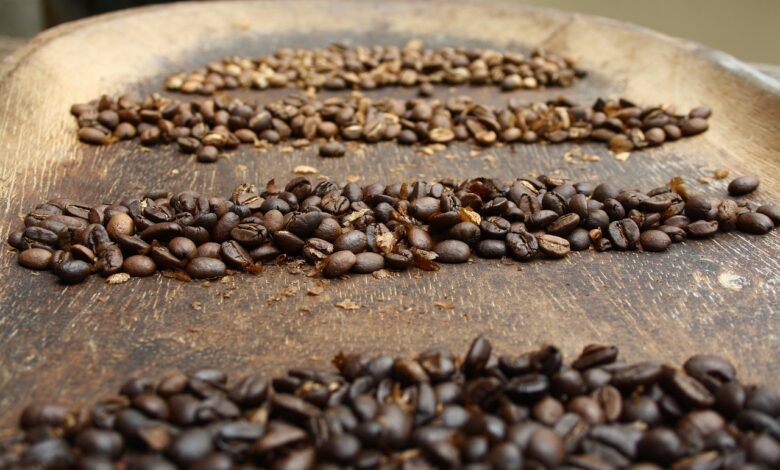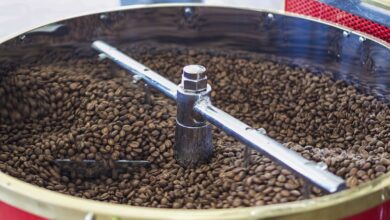
Philippines Single-Origin Coffee: Ready for the World
The Philippines is a treasure trove of diverse cultures, breathtaking landscapes, and unique flavors. Among its many delights, Philippines single-origin coffee stands out as a hidden gem for coffee enthusiasts around the world.
From the heights of Mount Apo to the cool hills of Sagada, high-quality beans abound. From these highlands down to the bustling markets of Batangas, the country offers a fascinating array of coffee varieties that reflect the diverse landscapes and cultures that make up this tropical paradise. In this article, we take a journey through the best of Philippines single-origin coffee, exploring the distinct flavors of its regions and highlighting some of its most renowned coffee varieties.
-
Mt. Apo Arabica
Nestled on the island of Mindanao, Mount Apo, the country’s highest peak, is home to some of our finest Arabica. The high altitude and volcanic soil of this region create the perfect conditions for growing exceptional coffee. Mt. Apo Arabica is known for its bright acidity, medium body, and a delightful combination of fruity and floral notes. It’s a coffee that encapsulates the richness of Mindanao’s highlands and the dedication of local farmers who cultivate it.
-
Sagada Arabica
In the picturesque Mountain Province, the town of Sagada is known for its unique Arabica coffee. The cold, mountainous climate imparts a distinct flavor profile to Sagada Arabica. This is characterized by its earthy tones, medium body, and hints of chocolate and fruitiness. The organic and sustainable farming practices of Sagada’s coffee farmers contribute to its reputation as one of the Philippines’ premium coffee varieties.
-
Alfonso Liberica
Alfonso, a town in the province of Cavite, is famous for its Liberica coffee, locally known as “Kape Barako.” This robust and bold coffee variety has a strong aroma and a flavor that packs a punch. Kape Barako is known for its full-bodied taste with nutty and smoky undertones, making it a favorite among those who prefer a powerful cup of coffee. It’s a beloved cultural icon in the region and an essential part of Cavite’s heritage.
-
Benguet Arabica
The jewel of Benguet Province, located in Luzon’s northern highlands, is another coffee haven in the Philippines. Benguet Arabica beans thrive in the cool climate and volcanic soil, resulting in a coffee with bright acidity and complex flavors. Coffee connoisseurs often appreciate Benguet Arabica for its floral and citrusy notes, as well as its medium body. It’s a testament to the skill and dedication of local farmers who have perfected their craft over generations. If you’re visiting Baguio City, make sure to enjoy a hot cup on a cold day!
-
Batangas Barako
If you’re from Manila, this might be a go-to for you. Batangas, in the southern part of Luzon, is renowned for its “Barako” coffee. This robusta variety is one of the most famous Philippines single-origin coffee. It’s known for its strong and bold flavor and has been a staple in our local coffee culture for centuries. It boasts a unique taste with strong, smoky notes and a touch of bitterness. Batangas Barako coffee is not just a drink but a symbol of resilience and pride, reflecting the heritage of the region.
-
Kalinga Robusta
Back up north, in the highlands of Kalinga Province, Robusta coffee reigns supreme. Kalinga Robusta is known for its bold and robust flavor profile, with earthy and nutty undertones. The region’s indigenous communities have been cultivating Robusta coffee for generations, making it an integral part of their culture and livelihood.
Coffee and the Filipino Story: Is the World Ready?
Our nation’s rich coffee heritage has long been rooted in its diverse varieties. Visiting these farms even offers the bonus of breathtaking landscapes, and has opened opportunities for eco-tourism. From the exotic Mt. Apo Arabica to the robust Batangas Barako, each region and coffee type tells a unique story of Filipino culture, history, and craftsmanship. So exploring the richness of Philippines single-origin coffee is no longer just a sensory experience but also an opportunity to connect with the heart and soul of a nation known for its warmth and hospitality.
As locals, these flavors we’ve mentioned above are all toofamiliar. We know and love them, and will continue to enjoy them for as long as we live. Our children and grandchildren will certainly enjoy them as well. But along with that pride comes a thought, that perhaps our coffee heritage is a product the rest of the world is prepared to enjoy. Rather than being one of our best-kept secrets, it’s about time we share it.
Let’s start today! Whether you’re a seasoned coffee aficionado or simply curious, please do travel the country and let your palate run wild on these flavors of Philippines single-origin coffee! And tell your foreign friends about it!




